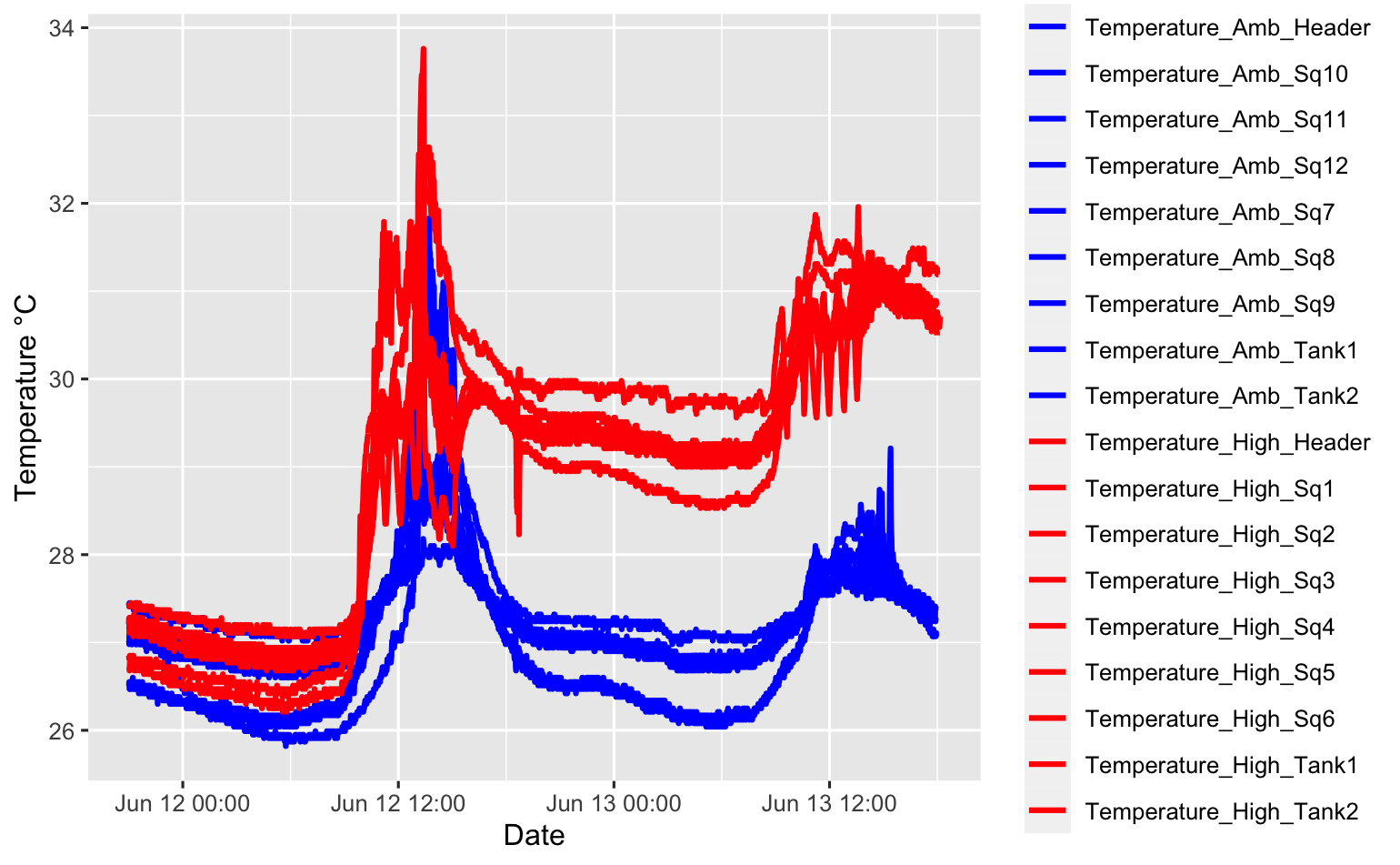13 June 2022
Expedition Overview
The purpose of this field expedition is to conduct research during the spawning season for the coral Montipora capitata and the larval brooding season for Pocillopora acuta in Hawaii. Jill Ashey and Ariana Huffmyer (Putnam Lab, URI) and collaborators are conducting research at the Hawaii Institute of Marine Biology in June - July 2022. Projects include characterization of the role of microRNA in coral development see J. Ashey’s notebook here and the timing of symbiotic nutritional exchange see A. Huffmyer’s notebook here.
Larval collection
Over the last two days, we have only obtained <20 larvae in total from our 21 coral colonies. The CRL lab is also monitoring for P. acuta larval release and has also had low or no larvae collected. The full moon is June 14, so it is possible there will be higher larval release in the days following the full moon. We reset the colonies into the collection buckets this evening to check for larvae again in the morning.
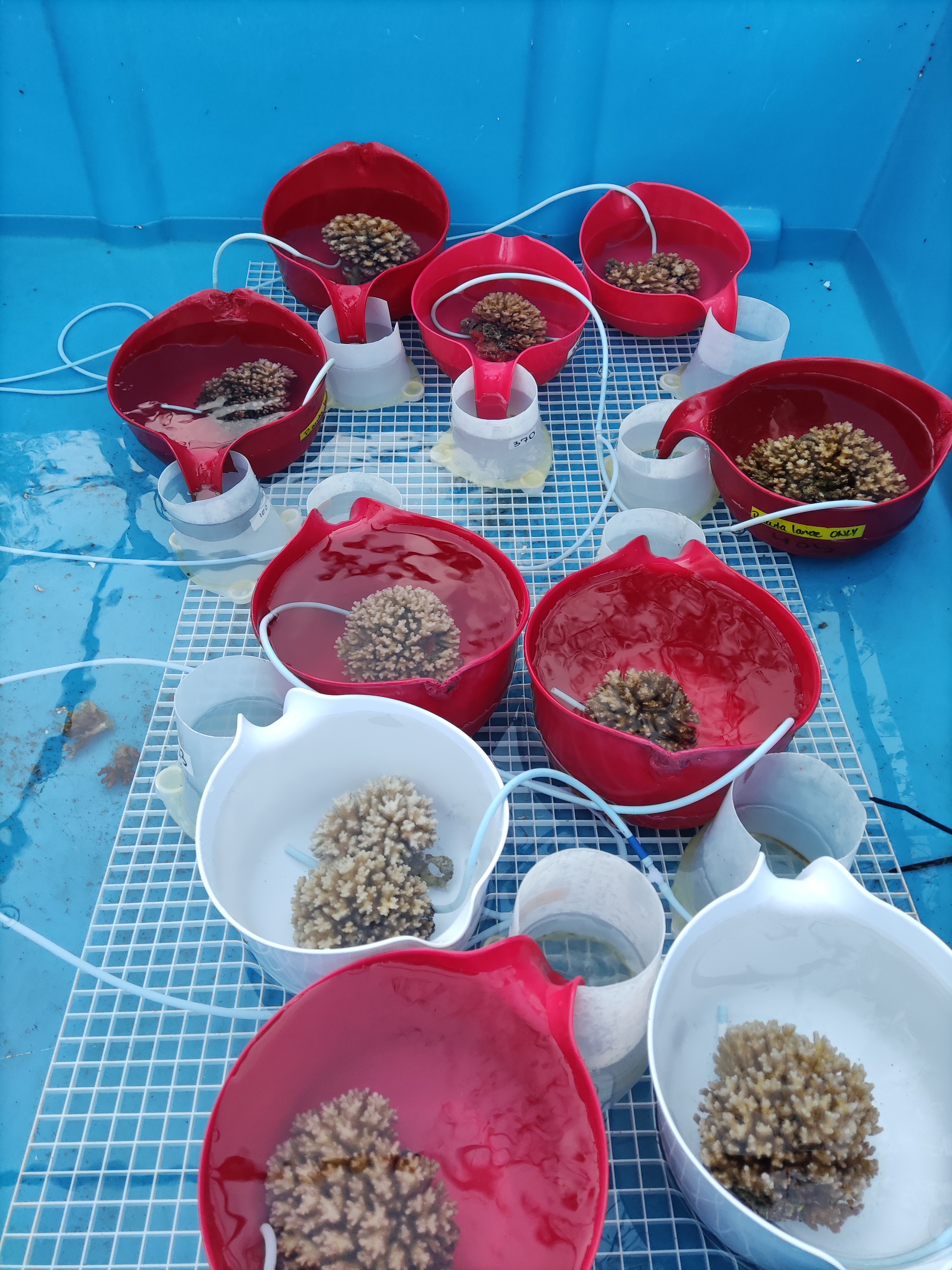
Tank set up
Federica, Ariana, and Jill continued to setup and revise design of our tanks. Federica assembled the cooler systems needed for her pH experiment and Jill labeled all components of the temperature system.
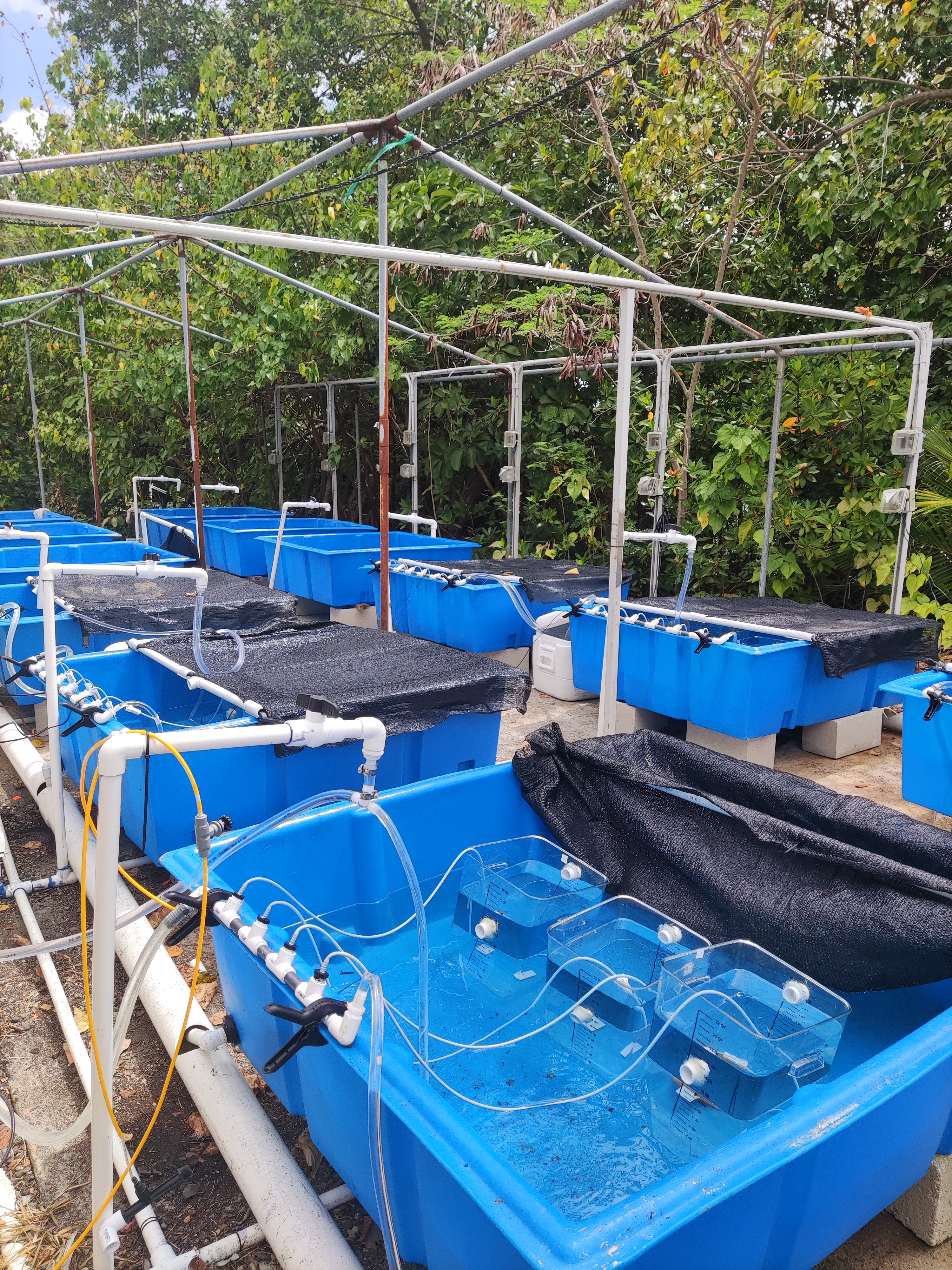
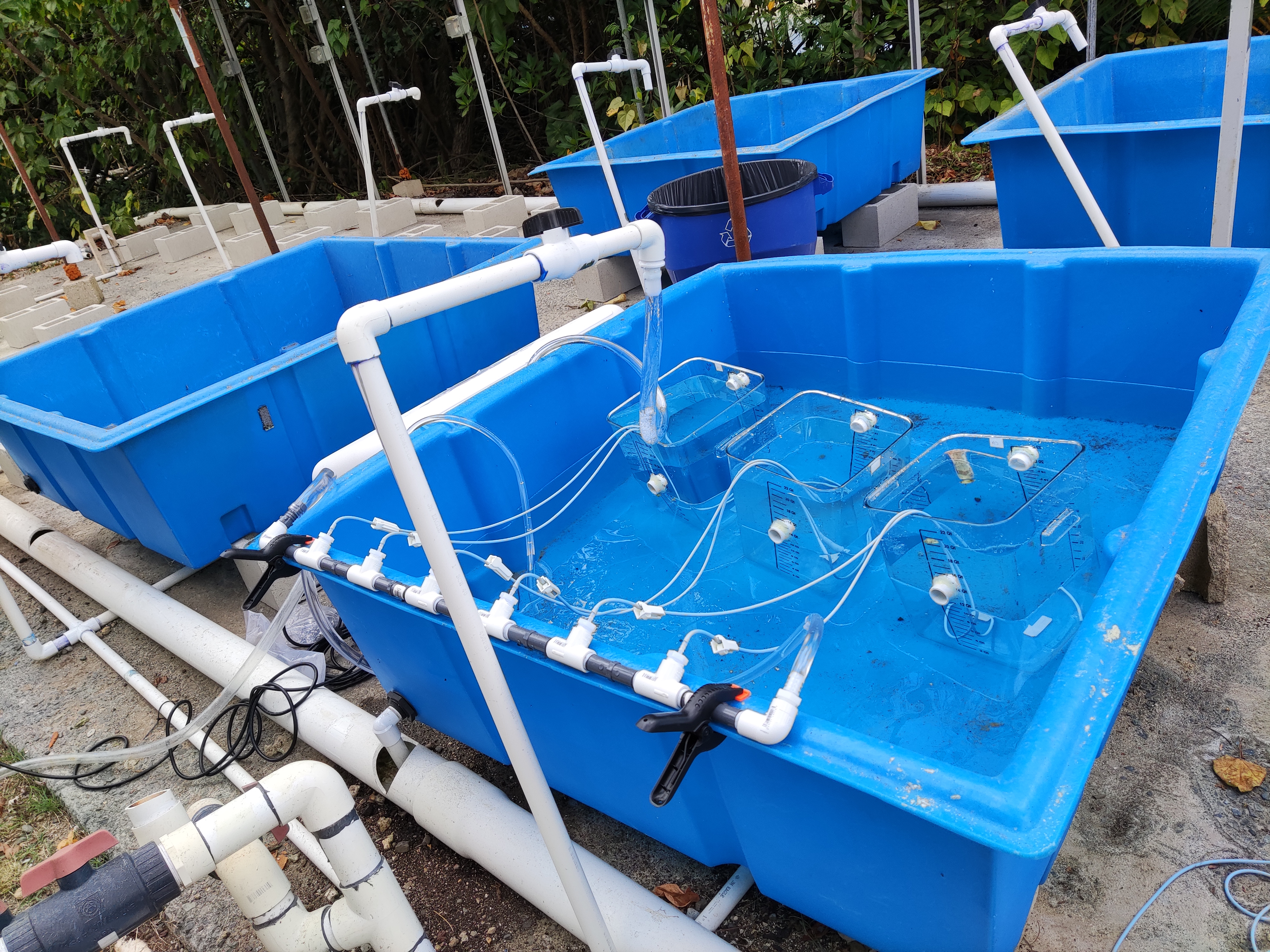
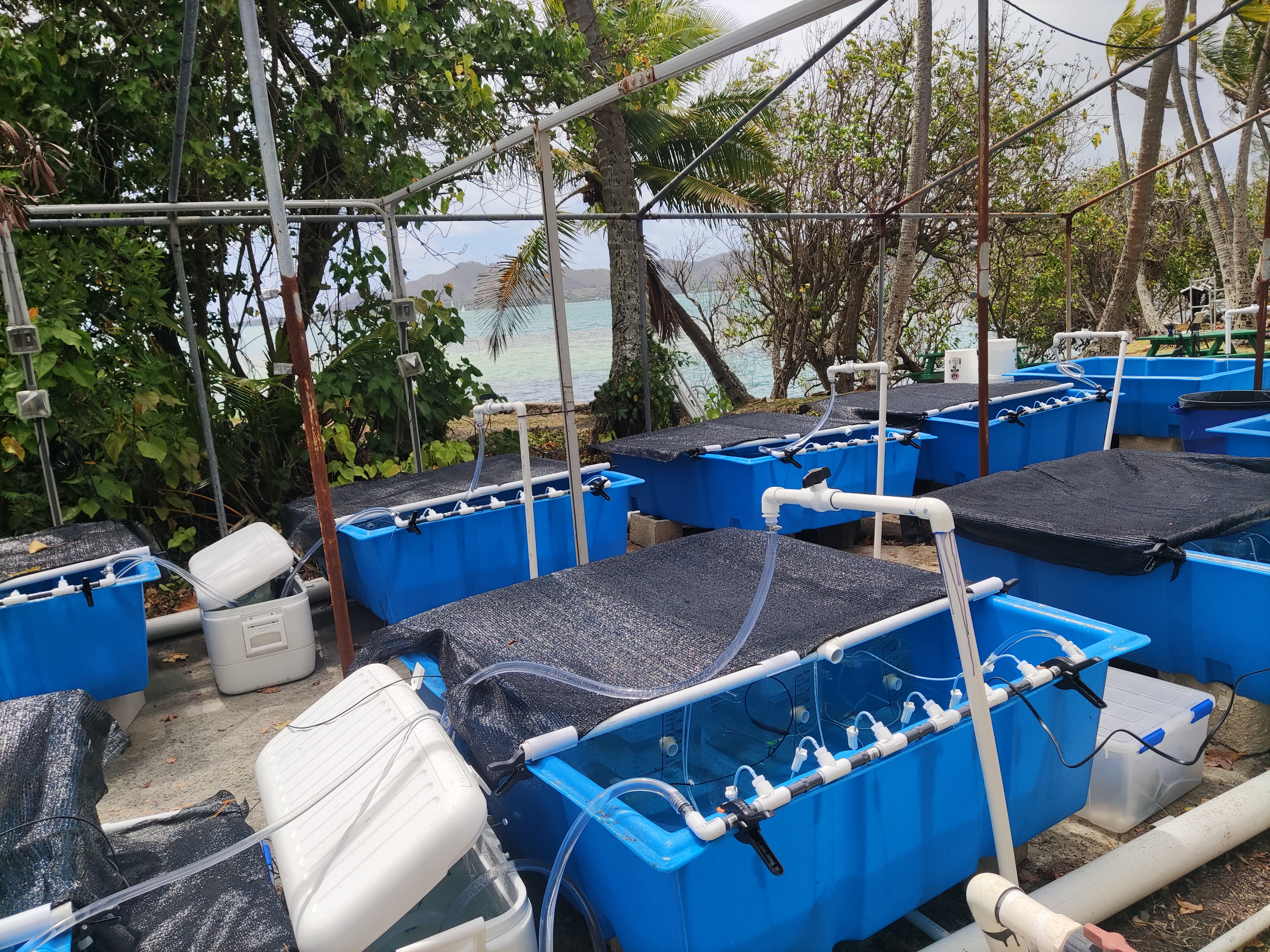
Liquid nitrogen
We traveled to UH Manoa campus today to fill and charge our liquid nitrogen dry shipper that can be used for sampling this week. We used 33lbs of nitrogen to charge and have extra liquid in the dry shipper.
Temperature treatments
We monitored the Apex system today and increased the temperature to be ambient +3°C with approx. 1.2° daily fluctuation. THe temperature was not reaching the highest value needed, so we added a static heater to the header and each water bath. The temperature was then able to reach the desired level. The Apex system had fewer connection issues today and seems to be working well.
Jill downloaded and plotted the temperature data logged on the Hobo loggers. We have distinct separation between high and ambient squarical temperatures and we are getting towards a stabilized temperature profile with the changes we have made.
These figures show the temperature data as we have gone through optimization process and revising temperature systems. Here, you can see the temperature treatments in high and ambient systems have stabilized today and are separated. Yesterday, temperature spiked in all tanks as we removed probes from tanks and revised the tank set up. Today with the revised programming and finalized tank set up we are achieving more stable temperature profiles. We are also monitoring temperature in the cooler headers and the water baths to allow us to problem solve if we have any issues with temperature treatment.
